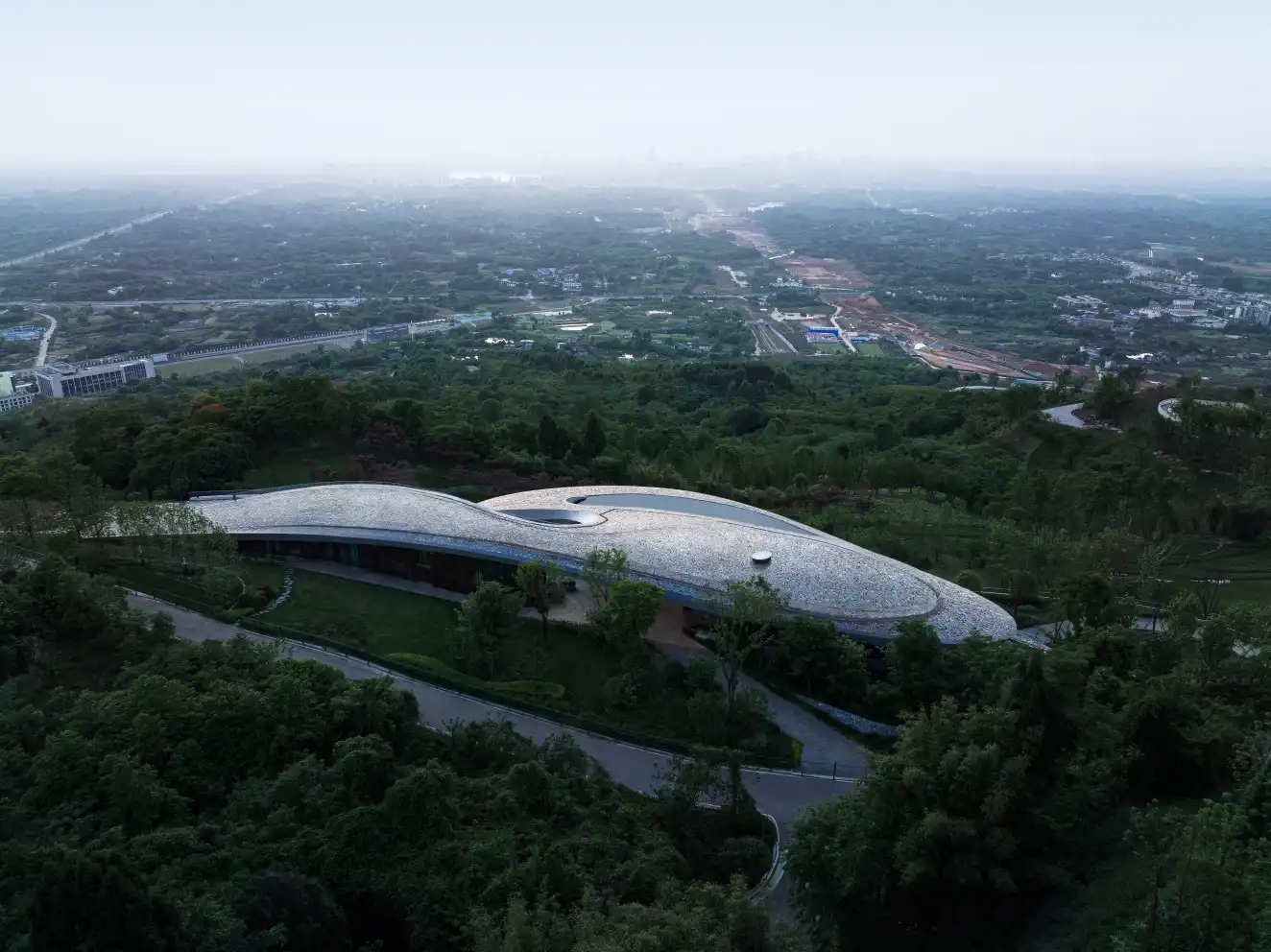The Longquan Mountain Observatory, a building at the highest point in the city of Chengdu, is said to be a flowing landscape element. To achieve this, the design contains artificial elements that carry out a dialogue with the expansive landscape. As a result, the building does not increase abruptly from the mountains; Instead, it appears as a liquid, rising surface that reacts to the topography. The horizontal orientation of the structure reflects the landscape of the Chengdu level. It consists of a series of horizontally oriented sections at different heights that are continuously connected to each other.

The new “high” point of Chengdu
Although Chengdu is surrounded by the Shu Mountains, the topography of the levels in the west of Sichuan has long had the impression that his space is gently expanding.
While the city is expanding quickly, Longquan Mountain is increasingly part of Chengdu's core development area. The nearby hills and the distant Xiling Snow Mountain offer vertical layers and climatic variations that improve the city's landscape. This combination creates a significant spatial tension and depth.
Over the years, BUZZ has interpreted the topic of the mountains in different ways: In traditional western literature, the durability and solidity of the mountains is a constant topic. From the eastern perspective, however, the stability of the mountains is replaced by fluidity such as water and clouds by billions of years of changing space and time.

The Longquan Mountain Observatory, a building at the highest point in the city of Chengdu, is said to be a flowing element of the landscape. The building is deep in the natural environment of the Longquan Mountain Top, but overlooks a growing megalopol.
As a result, it has become an important challenge on how to concern a dialogue with the large -scale landscape. The building does not rise abruptly from the mountains, but appears as a rising surface and reacts to the topography in a fluent way. The horizontal attitude particularly reflects the landscape of the Chengdu level.
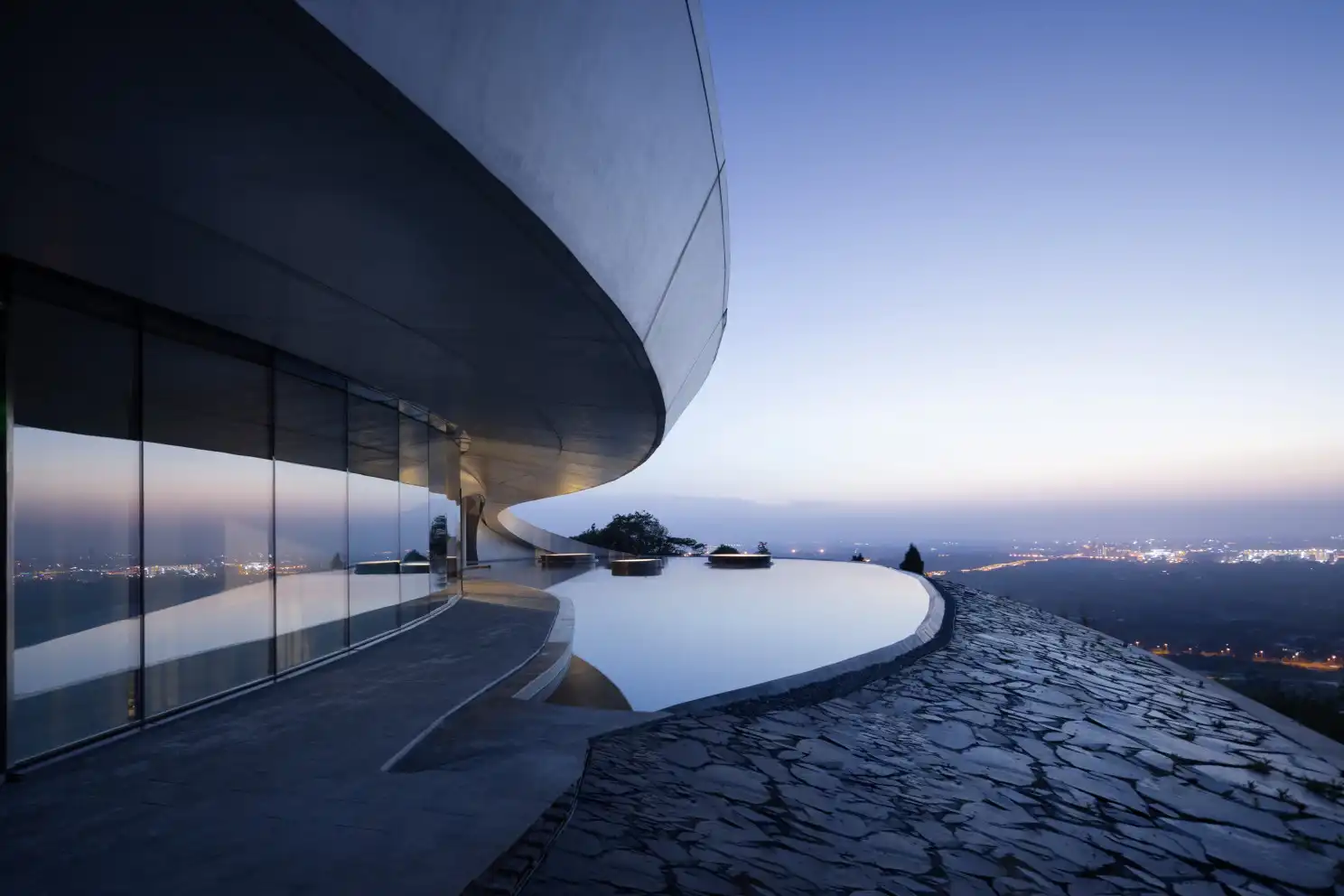
Surface and section of a movement
The building consists of a series of horizontally oriented interfaces with different heights, which in turn are continuously connected. The floor plan flows along a sequence of courtyards and reacts to different height differences in order to create different local properties. The different positions of the courtyards also create a variety of contrasting visual relationships, some points of view that open a Vista over the city, others look back on the mountains.
The roof of the building integrates into the height difference of the location in order to form a winding pedestrian surface, which then becomes an open visual platform between the mountains. The continuous water surface under the roof, where the landscape pool and the pool merge into one, reflects the color of the sky, and the boundary of the water surface dissolves into the distant horizon.
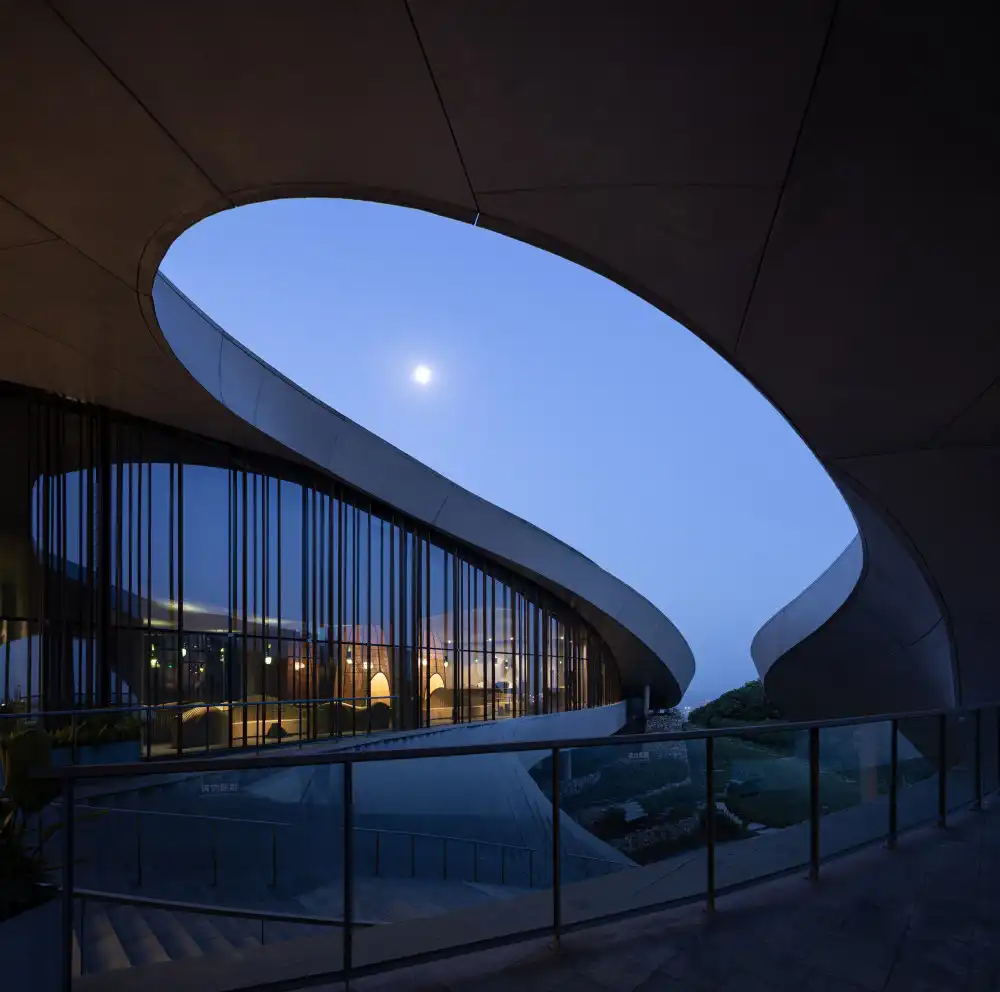
The roof itself is paved with natural stones of different sizes, and over the years the vegetation will gradually climb the building along the gaps between the stones, so that the building still develops in the form of a natural mountain surface. The choice of the GRC concrete slabs for the main body of the building and the gray tones of the material itself also support the building in order to better integrate into the environment. The introduction of grid elements breaks the continuous horizontal facade of the building and establishes a direct connection between the interior and the outside of the building.
In combination with the height of the location, the natural features and the interaction of almost distant views, the architectural space creates a strong visual effect through its own underlying tension. The spatial design of the building in terms of shape and material is an attempt to dispel the feeling of architectural presence. The design tries to increase spatial fluidity by creating an architectural interface. The entire building does not have a very clear axial relationship, but it is continuously in the flow, both in terms of function itself and the spatial experience. In addition, this liquid relationship is naturally formed in connection with the increase in the area.
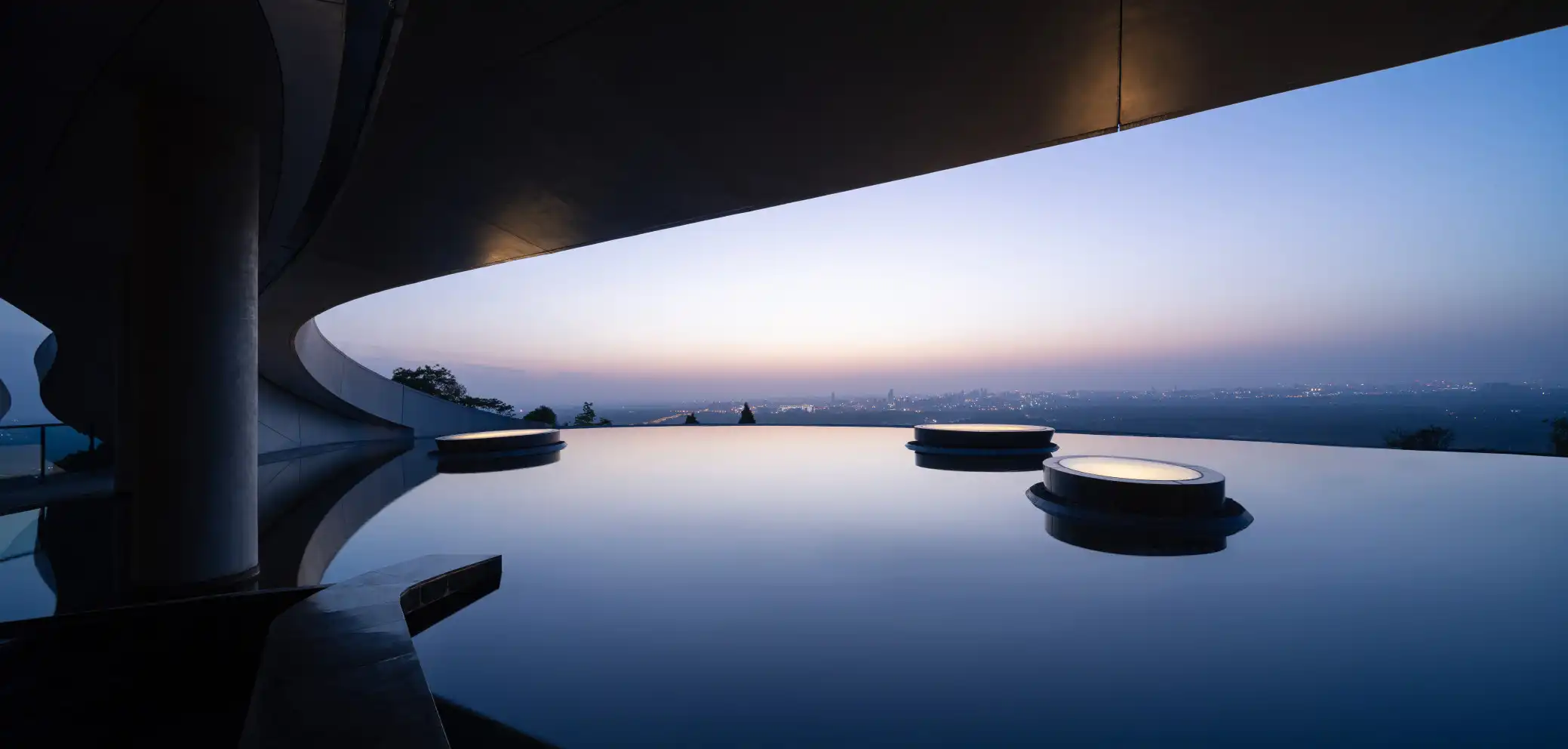
A distant frame and one almost
From the moment you rose under the eaves, the strongest experience of the infinite water basin, which connects the sky under your feet, and the city in the distance, which supports with snow -covered mountains and unfolds in front of his eyes like a great painting . The multi -purpose hall and the auxiliary features of the pool step back behind the water and leave an open view of the pool.
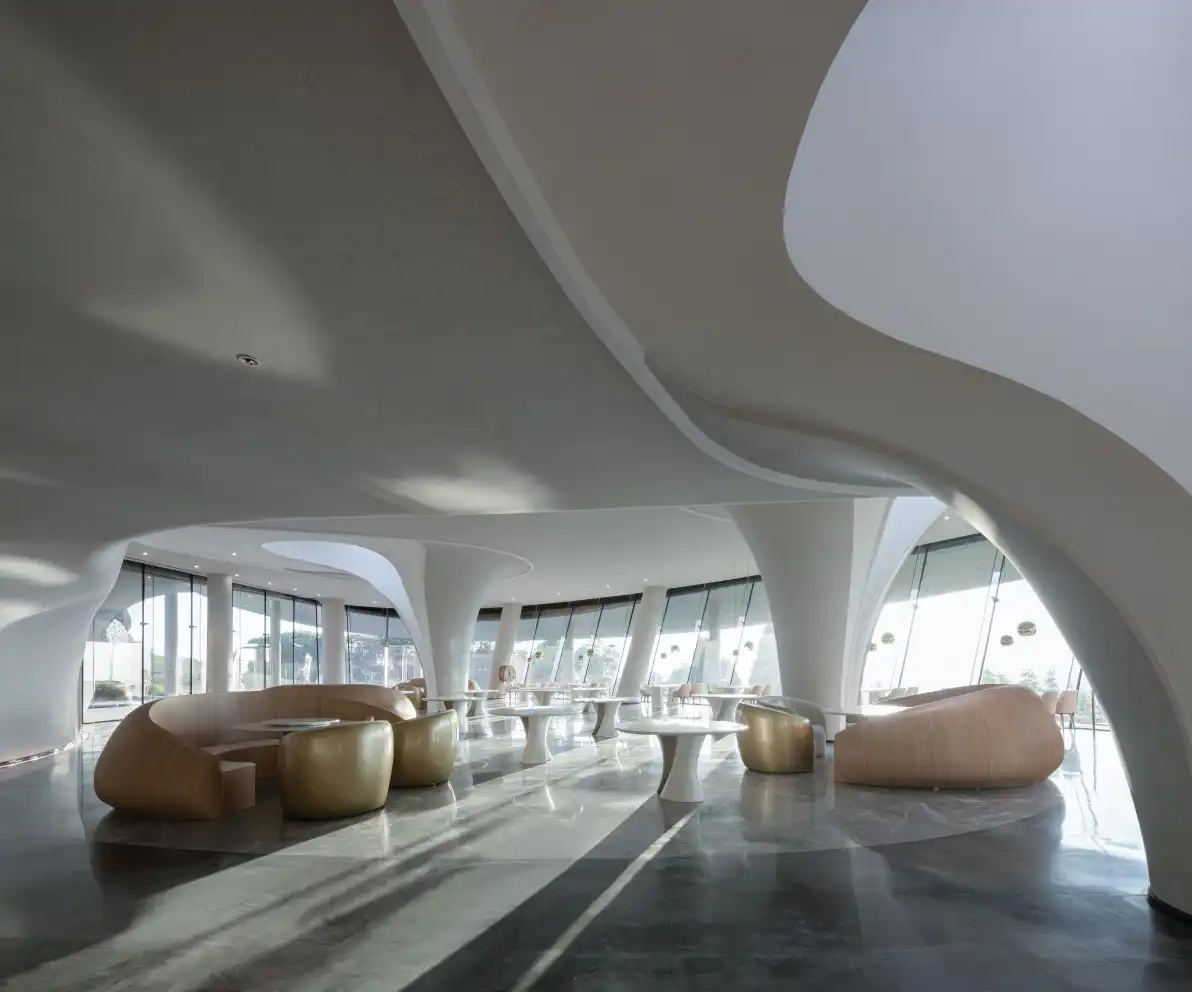
The restaurant is located in the same open view, which is framed by the landscape pools and the main section goes beyond the mountain to get a better view of view. Three structural columns within the restaurant correspond to the light openings in the pool above the restaurant and have a sparkling light. The main part of the restaurant feeds beyond the mountain, which is then cascaded back to the terrace. The protruding section is the primary multifunctional room that faces the open mountain environment for a better visual experience.
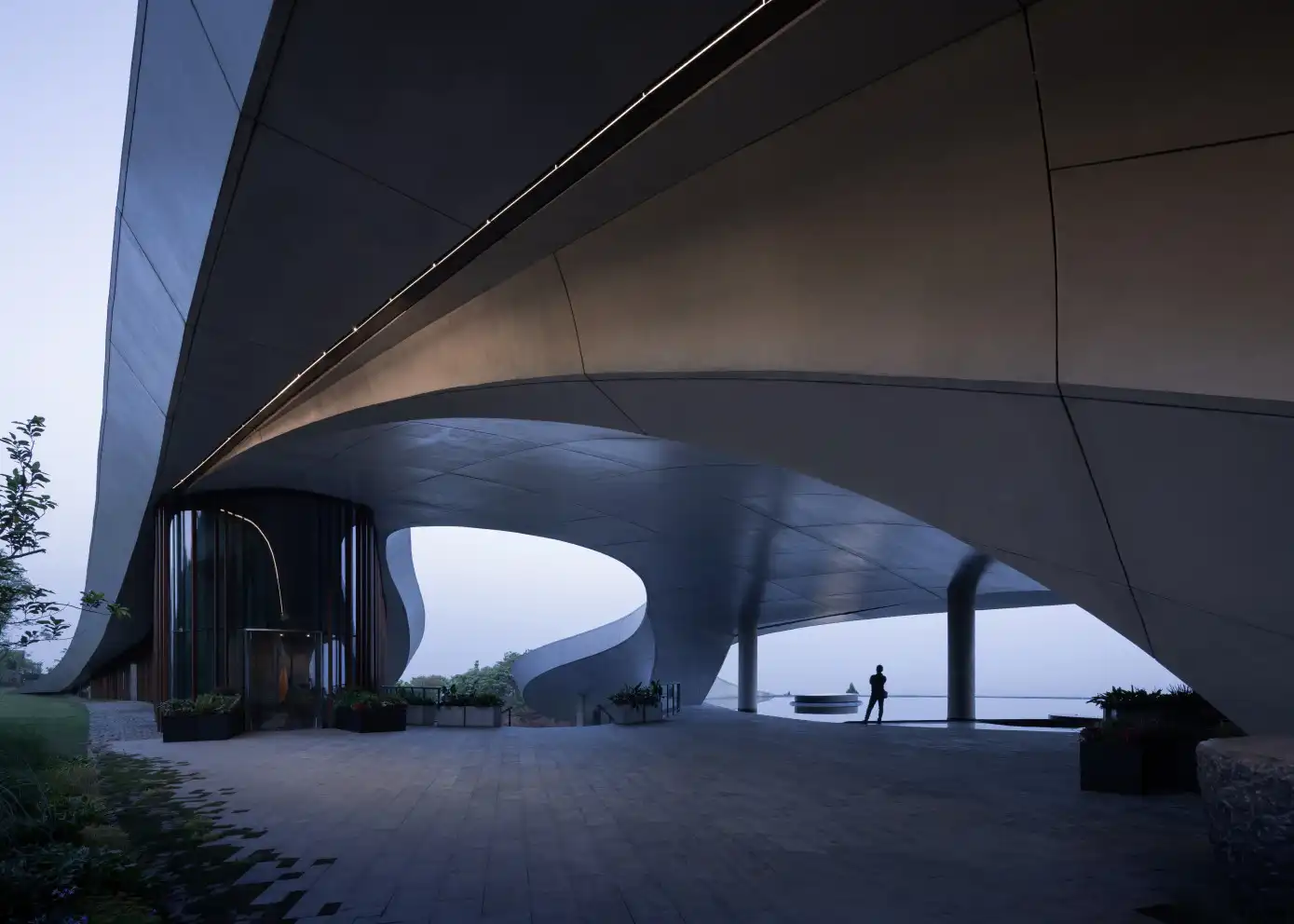
Serving functions such as logistical areas are covered under the eaves or hidden on the website. They also rely on the independent service cycle and are completely separated from the guests. In this way, the landscape experience of the visitor areas is unhindered and combines the interior of the building and the natural environment. This balance is involved with spatial fluidity and constantly summarizing layers, whereby they mandate in plan and cut relationships.
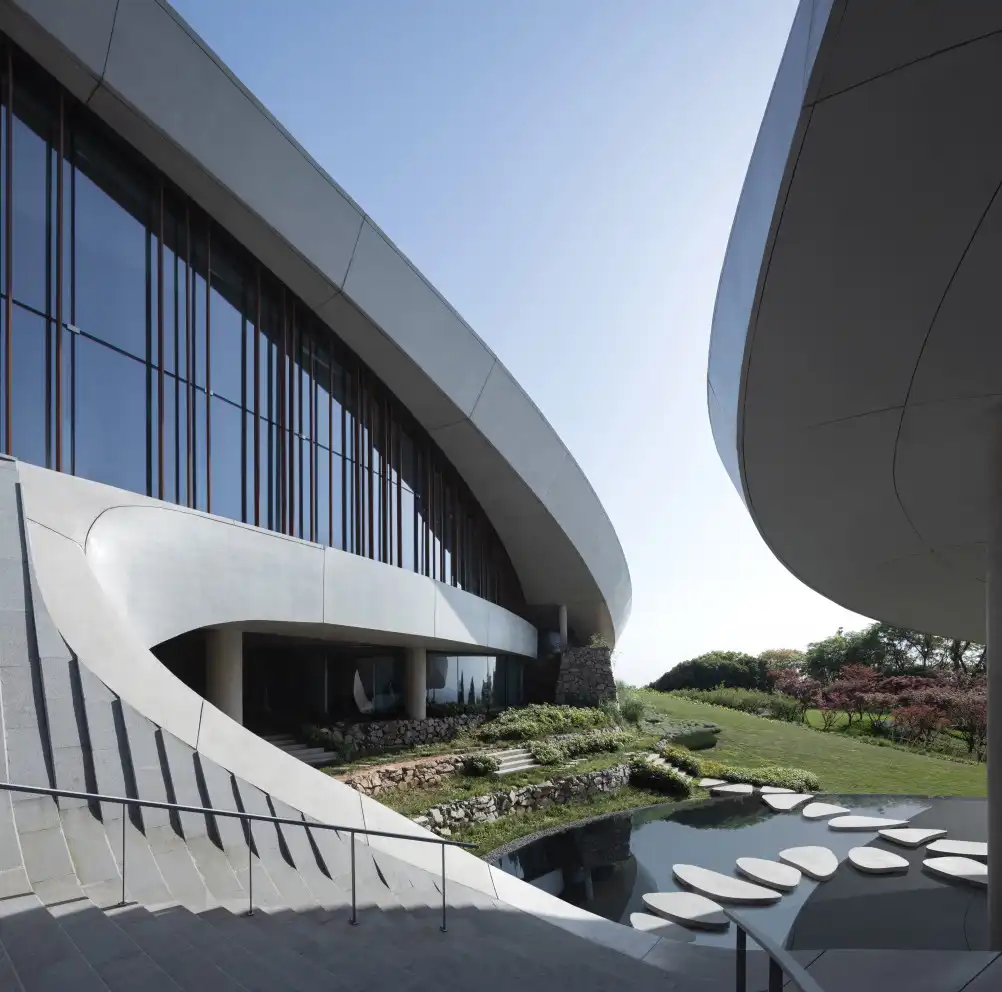
Artificial nature and natural artificiality
The most characteristic feature of the Longquan Mountain Observatory is the verticality of the site and the scaling of the scene. The view from the mountain overlooks the entire area of Chengdu and the landscape of the snow -covered mountains, as if a scrolling roller that extends from the city for dozens of kilometers is shrunk to a few thousand square meters of the building itself.
The architecture has a strong character and a strong identity that resembles a spaceship or a foreign form if they are seen from a few perspectives that are ready to start. At the same time, it is so far subject to the fact that it does not threaten or contradicts the existing natural environment, such as a fold in the ground or a flying bridge in the forest that is not visible.
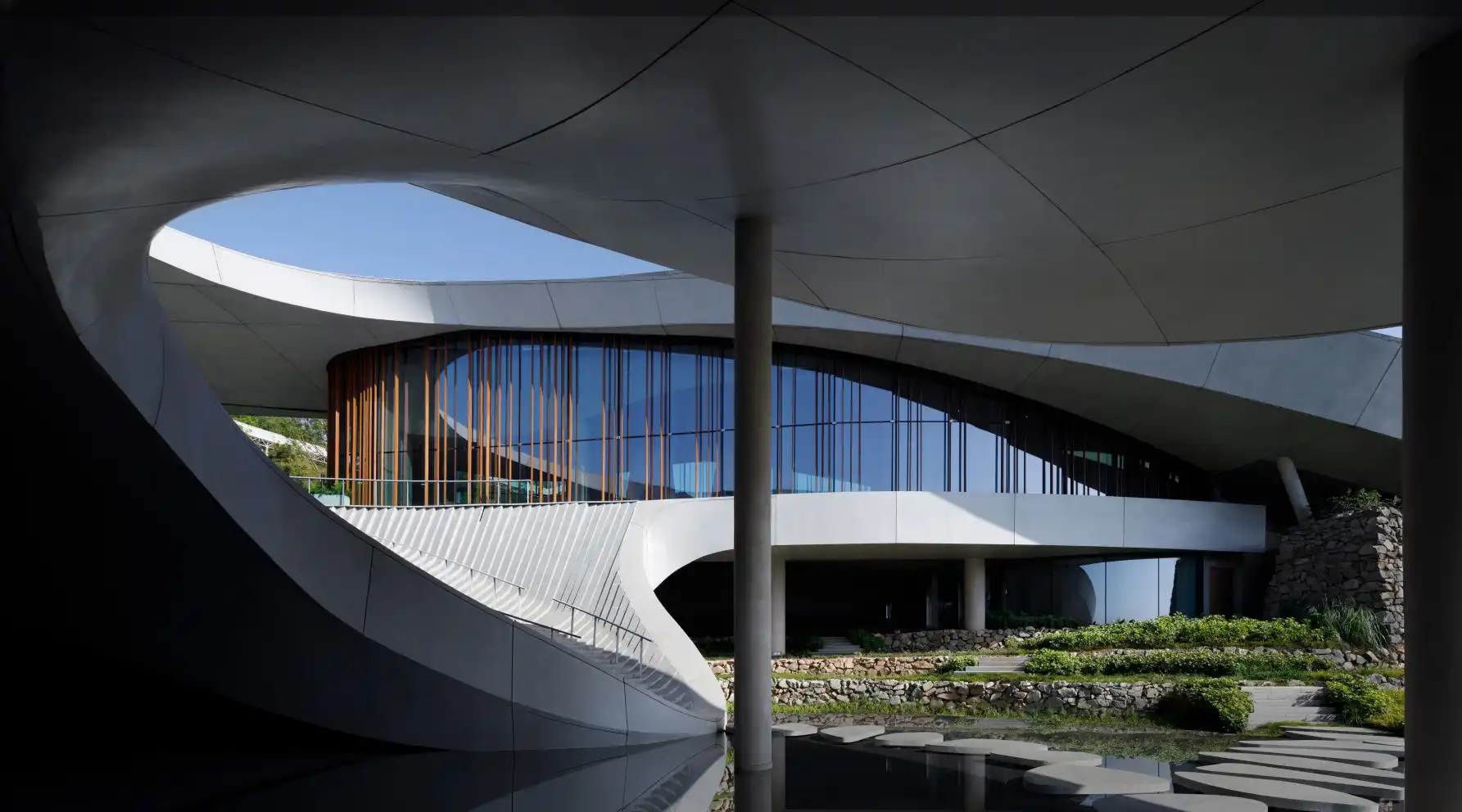
The transition of the interface from natural to artificial and back to the natural contains the adaptation and scaling of different spatial dimensions. This project uses the form and geometry of architecture to connect to this transformation. In addition, architecture represents the spatial sequences and fractal geometry, which are reminiscent of Chinese landscape paintings. It shows the continuous shift of the perspective, which is framed from courtyards that flow between artificial and natural flow.
This series of repetitions and movements also represents the narrative course of the archetypes of Buzz and allows this series of architectural exercises to the continuity and opposition of tradition and modernity. It shows on the conceptual level through a dialogue of spatial qualities and abstract relationships.
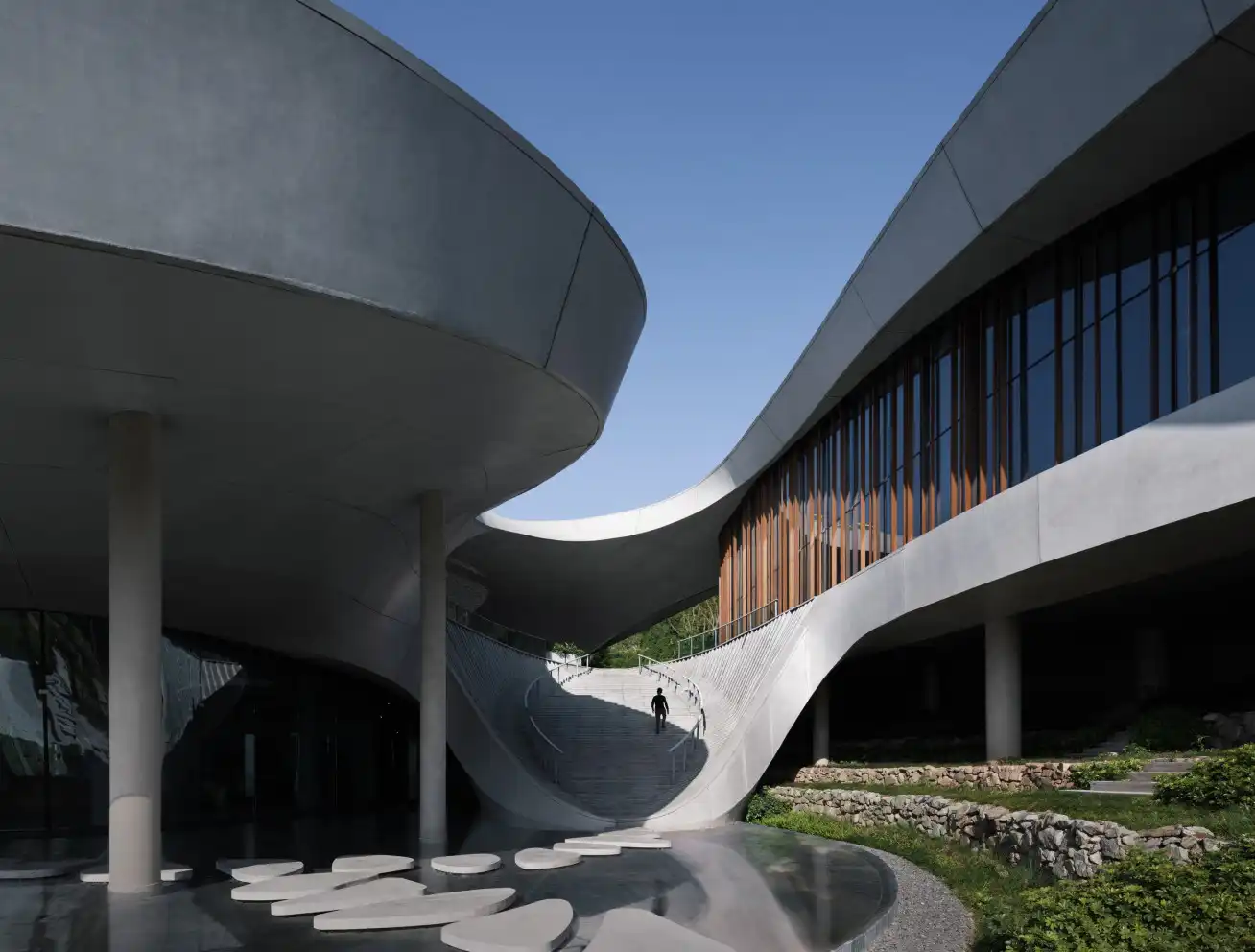
Longquan Mountain Observatory Project Details:
architect: Buzz / Bisro Ziyu Zhuang
Type: Hospitality + Sport ›Restaurant Wellness/Spa
Cultural ›observation tower
Status: Built -up
Year: 2023
Size: 3000 m² – 5000 m²
The project description is provided by the architects.
